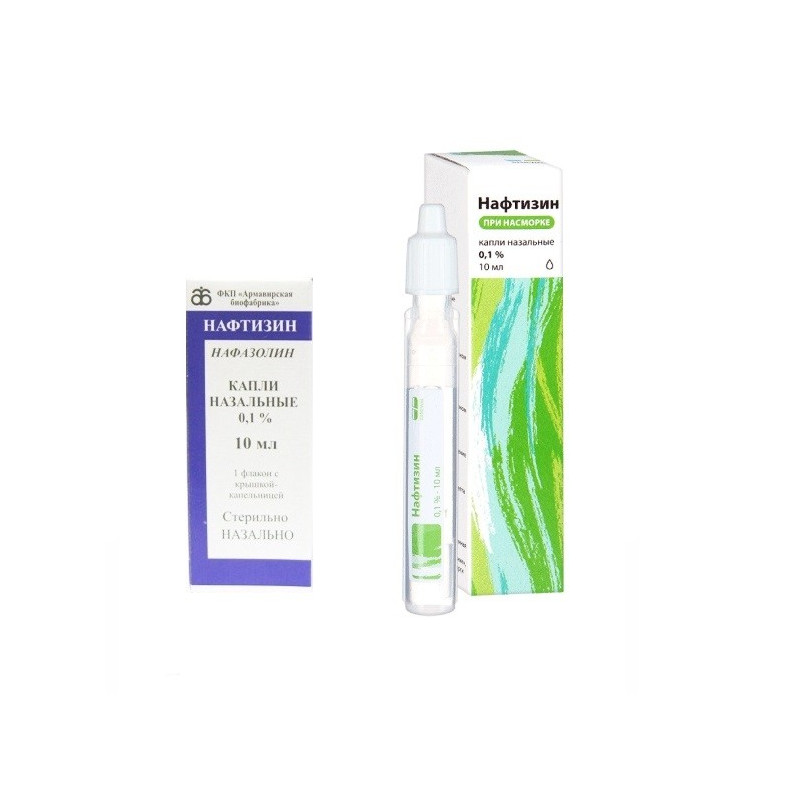



 All payments are encrypted via SSL
All payments are encrypted via SSL
 Full Refund if you haven't received your order
Full Refund if you haven't received your order
Nasal drops 0.1%
1 ml of solution contain 1 mg naphazoline nitrate.
10 ml.
Naftizin has alpha-adrenomimetic, anti-inflammatory (anti-edematous) effect.
Acute rhinitis, hay fever, sinusitis, nosebleeds, allergic conjunctivitis; during rhinoscopy and other surgical and diagnostic procedures in traumatology and surgery in order to reduce puffiness and bleeding.
Hypersensitivity to the drug; arterial hypertension, marked atherosclerosis, hyperthyroidism, chronic rhinitis, serious eye diseases, diabetes mellitus; tachycardia; simultaneous administration of MAO inhibitors and a period of up to 14 days after the end of their use, age up to 18 years (for a 0.1% solution), age up to 1 year (for a 0.05% solution).
In otolaryngology: intranasal (in each nasal passage), adults are prescribed 1-3 drops of a 0.05-0.1% solution 3-4 times a day.
In children, a 0.05% solution is used: from 1 to 6 years old - 1-2 drops each, from 6 to 15 years old - 2 drops 1-3 times a day.
For diagnostic purposes, after cleaning the nose, drip 3-4 drops into each nasal passage or introduce a tampon dipped in 0.05% aqueous solution and leave for 1-2 minutes; with swelling of the vocal cords, inject 1-2 ml of the solution in small doses with a laryngeal syringe; with bleeding - swabs moistened with a 0.05% solution.
In ophthalmology: 1-2 drops of a 0.05% solution into the conjunctival cavity 1-3 times a day.
As an additional drug for surface anesthesia, 2-4 drops of 0.1% naphthyzine solution per 1 ml of local anesthetic.
Nausea, tachycardia, headache, high blood pressure, reactive hyperemia, swelling of the nasal mucosa. Irritation, when applied for more than 1 week - swelling of the nasal mucosa.
If naphthyzine is used for a long time, then it should be borne in mind that its vasoconstrictive effect gradually decreases (the phenomenon of tachyphylaxis), therefore it is recommended that after 5-7 days of use take a break for several days.
Naphthyzine, as well as other vasoconstrictor drugs, is not recommended for chronic rhinitis.
It should not be used simultaneously with MAO inhibitors or within 10 days after the end of their use.
Slows down the absorption of local anesthetic drugs (lengthens their action when performing surface anesthesia).
Symptoms: decrease in body temperature, bradycardia, increase in blood pressure.
Treatment: symptomatic.
In a dark place and out of reach of children.
3 years.
Naphthyzinum